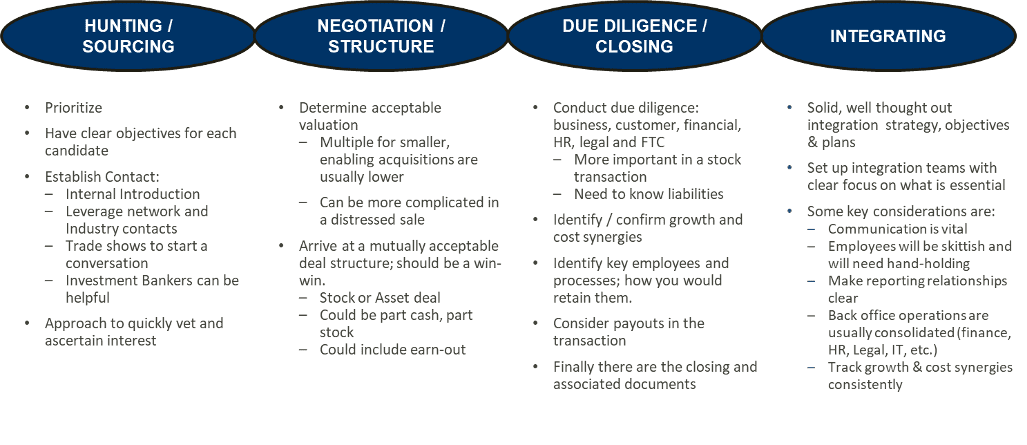
Relationship Marketing Through the Pandemic
Relationship Marketing Through the Pandemic

Written By
The chaos of 2020 has led many businesses to assess how well their marketing strategies translate during a pandemic. We’ve spent a good deal of time walking through this in our marketing during a pandemic blog series, but we wanted to narrow in a bit—specifically whether relationship marketing is possible during a global pandemic.
I don’t think anything has, or necessarily ever will change with relationship marketing. It will always be a cornerstone of business development regardless of what happens in the world.
What is Relationship Marketing?
Relationship marketing is a big idea—not a single tactic or a one-time campaign. It’s a long-term strategy focused on customer retention. It takes concerted effort and authentic engagement to foster a real sense of connection with a buyer. It can’t be faked, and it should be considered at every touch point in the customer journey.
Why Does Relationship Marketing Matter?
It’s simple. The way you make your customers feel is important and can’t be underestimated—especially during a time as trying as the one we’re in. If they feel emotionally connected to your brand, they are more likely to stick with you. Not to mention, the cost of keeping a customer coming back is much less than acquiring a new one. Not only is it less expensive to sell to a customer who already knows and likes your product or service, they are more likely to recommend you to people they know, resulting in free and very effective advertising. The more engaged a buyer is with your brand, the more valuable they are to long-term growth. So how does relationship marketing stack up in a pandemic, and is it even possible?
I think relationship marketing is especially important and effective now because people yearn for connection as we are separated by the pandemic and political division. Moreover, given the cost of customer/client acquisition, the longer you can keep a customer and the more services or products you can provide for them, it drives down the acquisition cost and makes the relationship more profitable. That is the true value of relationship marketing – turning a transaction into a long term association.
Can We Still Use Relationship Marketing Through the Pandemic?

What can we learn from this and how can we leverage relationship marketing to build stronger ties with our customers, so we can emerge stronger when this is all over? Here are a few key lessons we’ve learned about how to leverage relationship marketing during a pandemic, along with some valuable insights from our network.
Lesson 1: Treat humans like humans
While frightening and unpredictable, the global pandemic has created a shared experience and the sense that we are all in this together. For the first time, we all face a common enemy. We know that we aren’t alone in dealing with this, and that link is creating a sense of camaraderie that has allowed us to tap into more authentic, human interactions. Inherent in this is an opportunity to connect with our customers in a way that the pandemic has proven our customers crave—more genuine, honest, and even humanized engagement. Treating humans like humans may seem obvious, but the past year has shown us how powerful this simple tactic can be for connecting with your customers in a new and meaningful way.
Hands down, people are connecting with people more than they ever have in my career. Remote work has made us hungry for real engagement, and it is significantly impacting the way people are choosing who to work with.
The biz world seems more “humanized” than ever before, this shared human experience has generated more authentic conversations than at any other time in my career. The ability to be real, cut the jargon and the crap, frankly and just be human to each other will continue to serve salespeople and marketers alike.
For maximum long-term growth success you need to look and feel like your customers. You need to invest the time and money to deeply engage and make it personal. And ongoing. You also need to involve the entire company to show your customers the talent you have assembled across your company to help support their mission. This can be done during customer “experience” visits to your facility, training sessions, online interactions, seminars, etc. Digital tools further enable, but this needs to be complemented with the traditional, human-to-human interaction whenever possible.
Lesson 2: Transparency is key to accountability and trust
With the global pandemic came a rising awareness of how important transparency and accountability are to creating a true connection. We have seen how, as organizations, we are in a position to help bring about true change in the world at large. Not only is it possible, in many ways customers are demanding it. While this doesn’t happen overnight, companies that make steps to become more accountable to their customers can leverage this shift as an opportunity to build stronger, more meaningful ties.
At its heart Relationship Marketing is about building trust and engagement with customers to drive loyalty over the longer haul. In today’s unparalleled environment- economic/business uncertainty, major global health crisis, record unemployment, social unrest etc, trust and even aligned values between people, companies and brands are indeed more important than ever.
In addition to a pandemic we are also experiencing an unprecedented shift in consumer and corporate accountability and expectation for honesty and diversity. So yes, it’s more important than ever especially as companies try to build a more inclusive and diverse workforce. As companies face the harsh reality that they don’t have a culture that fosters diversity of thought or embraces inclusion, how or where do they turn for authentic feedback or even recommendations? That is why in my opinion relationship marketing is more important than ever as we are living in this rapidly changing and honesty fueled evolving period of time while facing a pandemic.
Lesson 3: Online tools are leading to more personal connections
As so many of us are in isolation, we are craving connection on a wide scale. We know that humans are social beings, and right now most of us are not getting the social connection we are used to leading many to feel isolated. Fortunately, we live in a world where online tools are readily available. Organizations that lean into these new ways of connecting through technology may discover new ways to engage with their audience that may not have been possible before the pandemic. In this sense, relationship marketing through a pandemic represents a powerful opportunity to tap into the needs of our customers—not just the needs our products or services can provide, but the simple human need of feeling connected.
Now that my corporate clients are settling into a longer scope of remote work, they are recommitting to leadership and sales training and coming to me for advice and input on how to make things more effective in this changing world. My business would be lost without maintaining those strong and authentic relationships, and I know they will continue to be differentiators.
Relationship marketing is absolutely important now and in some ways easier to do because of online tools.
Relationship Marketing has become more important in the ‘new normal.’Regular in person meetings and encounters a salesperson used to maintain and grow existing customer relationships will continue to happen less often compared to the past. Therefore, marketing’s role in fostering and maintaining ‘customer success’ will need to increase. Ultimately, the ‘new normal’ requires deeper integration and more collaborative relationships between marketing and sales.
Given the crazy times we are living in, real and authentic connections with each other create bonds that tie us together. With so many people feeling isolated and anxious, a friendly interaction can have an especially positive impact on one’s experience these days—even if that interaction is between a customer and a brand. When the pandemic ends, the changes that people around the world have made in how they operate their day-to-day lives will likely persist, so now is the time to start thinking about how to foster these deeper connections so your relationship with your customers is even stronger post-pandemic.
Have you started planning for 2021? Maybe it’s time to consider taking a closer look at the ways you engage with your customers, and how those lead to long term relationships and long-term growth.
About the Authors
Rajat “Raj” Kapur is the founder and Managing Director of &Marketing. He strives to provide growing businesses of all sizes unparalleled marketing strategy and execution services. Raj brings two decades of professional experience in marketing, sales, and strategy development experience spanning B2B and B2C Fortune 50, mid-sized, and startups.
Ann Ehinger is a Marketing Manager at &Marketing. She serves as the link between clients and creative to drive projects that deliver results. With over a decade of experience working in the non-profit, technology, and agency space, Ann is adept at managing a project from idea to completion while navigating all the ups and downs that pop up in between.
About &Marketing
&Marketing provides the robust outsourced marketing department growing companies need without the high overhead costs of big agencies or full-time employees. Our variable model empowers businesses to reach their growth goals through access to the guidance and expertise of senior level strategists and a flexible execution team.











Recent Comments